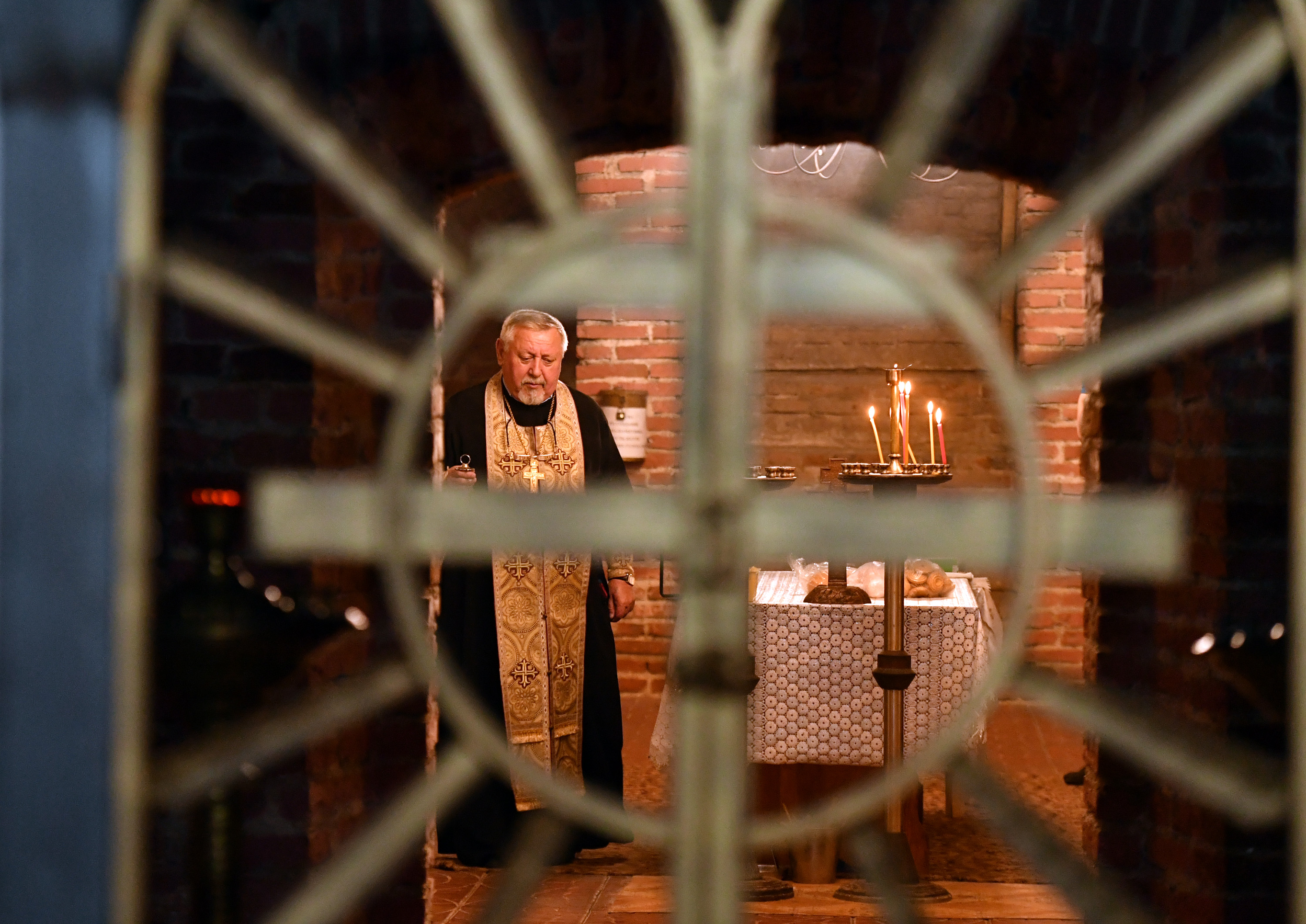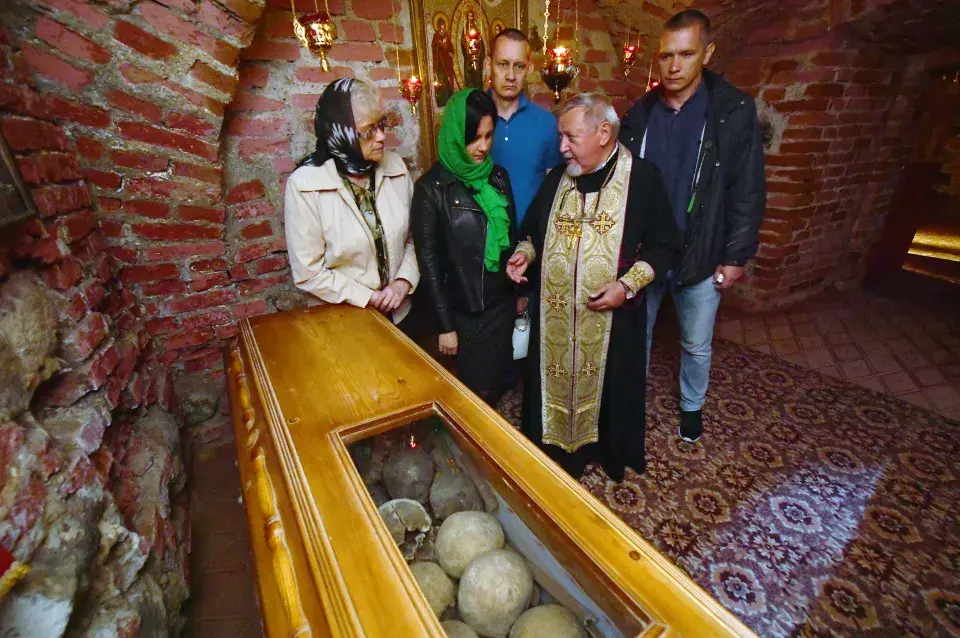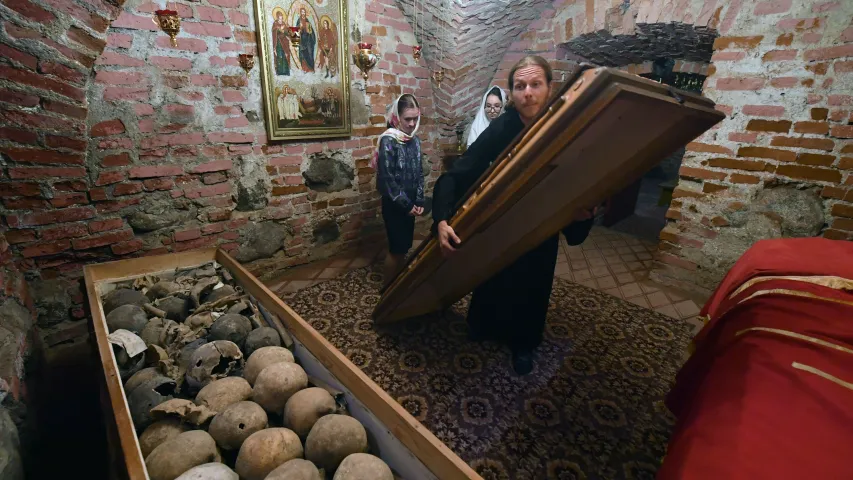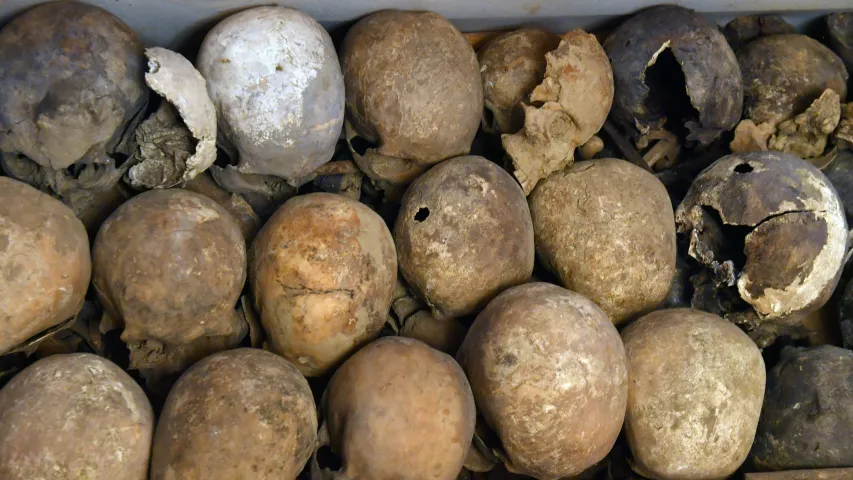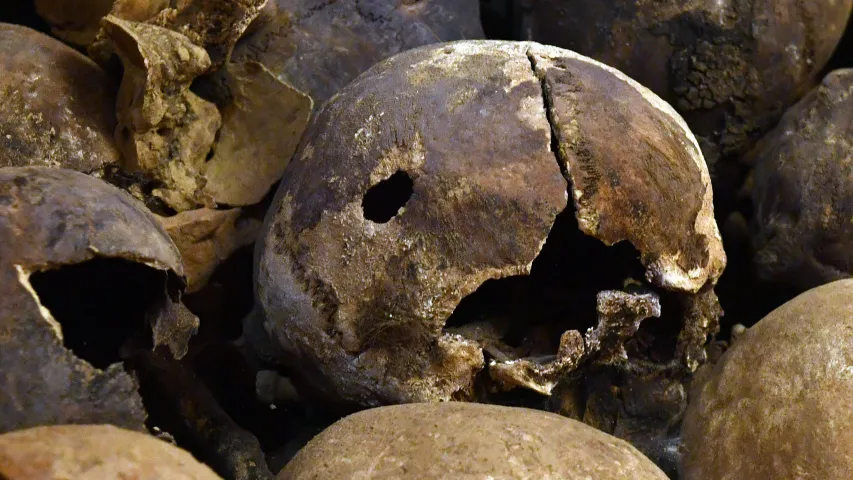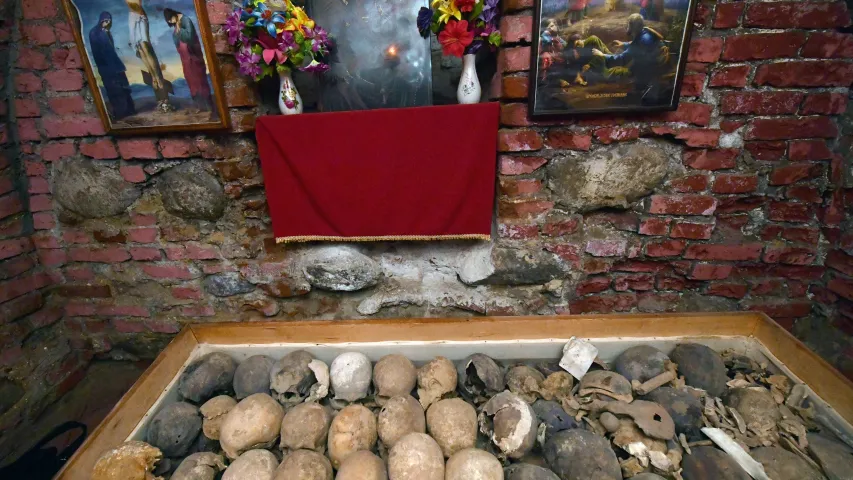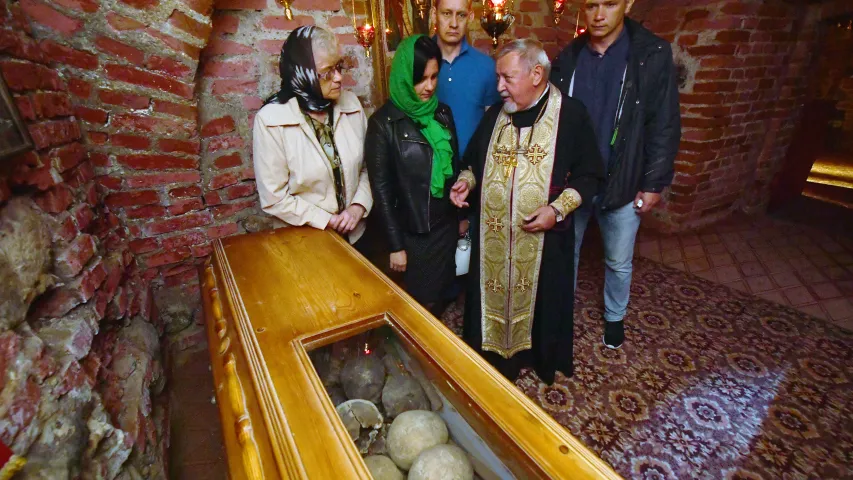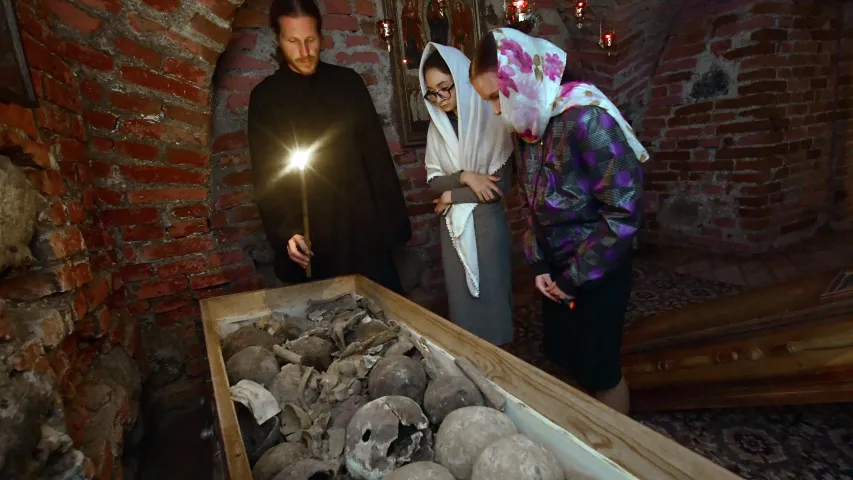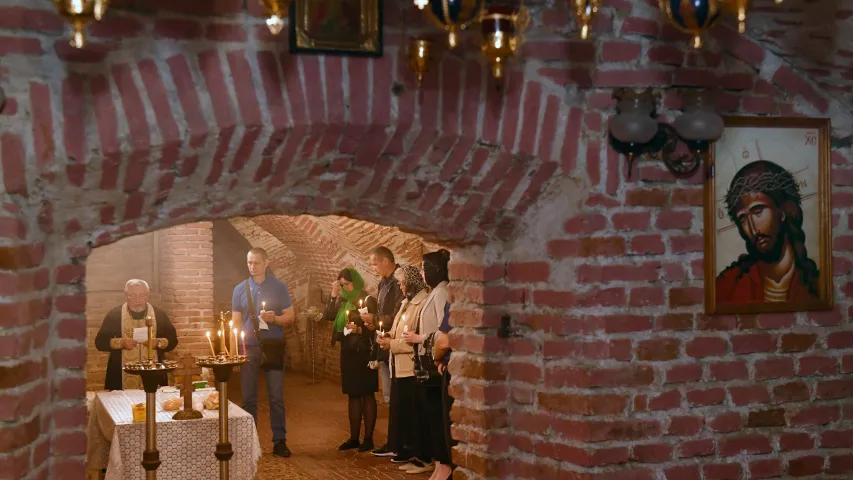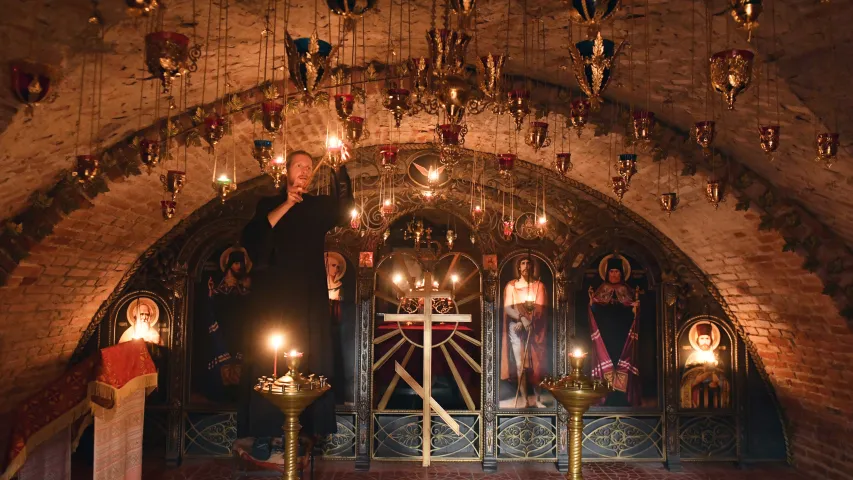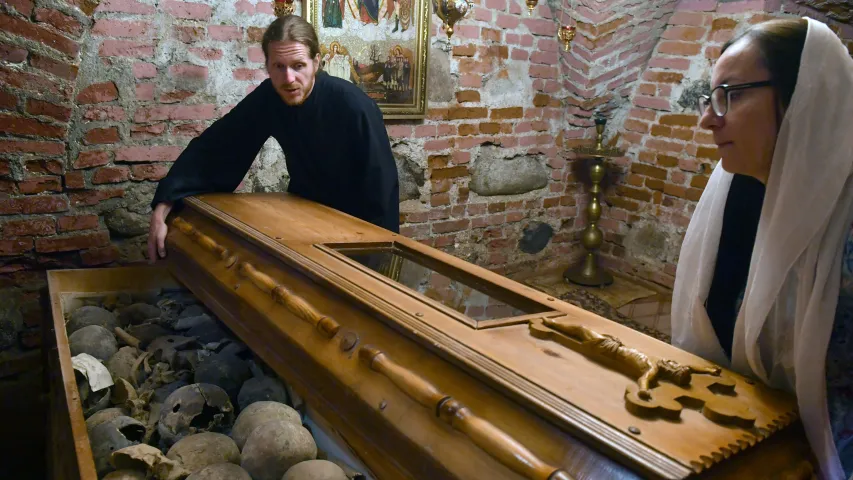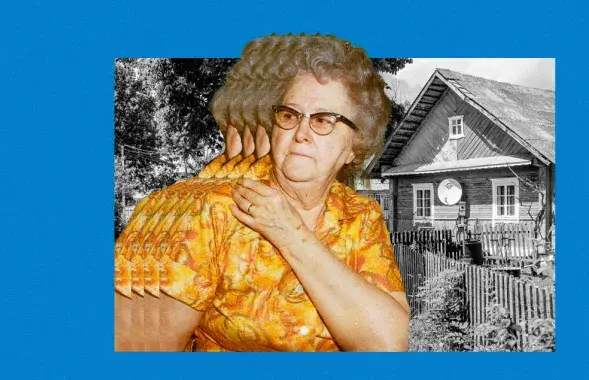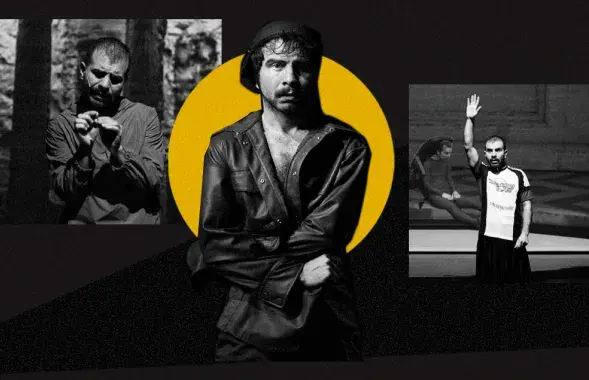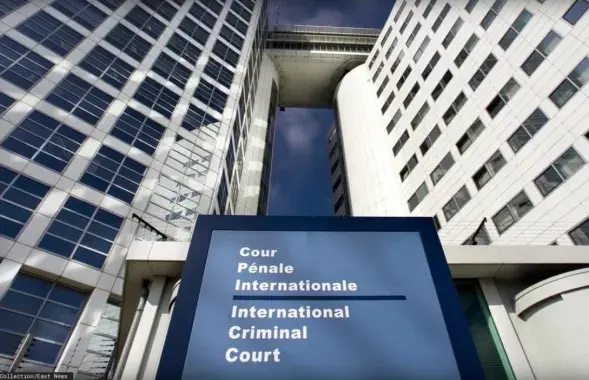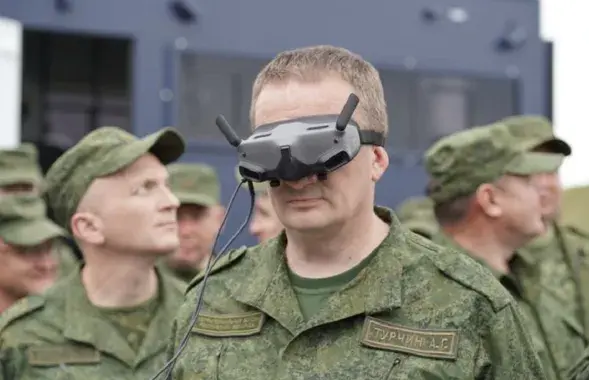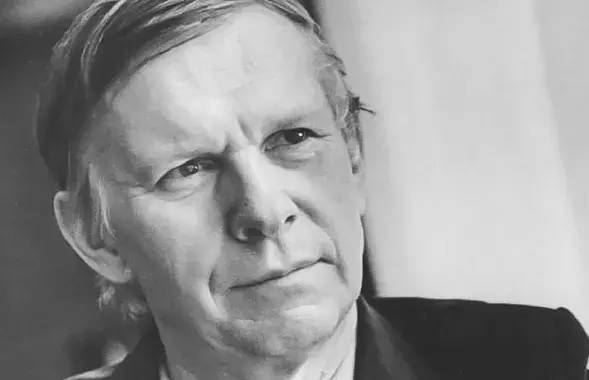Stalin's repression victims' remains remembered in Belarus church

Skulls of the executed victims in St. Michael's Cathedral in Mazyr / Euroradio
Today's Belarusian communists deny mass repressions. They believe that Stalinist atrocities are exaggerated. They say there isn't much blood on the hands of the Chekists from the 1930s, and that it was shed fairly: the criminals were shot.
But it hasn't been long since then that everything has been forgotten. Evidence of the atrocities of those times is preserved in all kinds of places. For example, in Mazyr, where NKVD set up a prison for "enemies of the people" in...a temple.
The Soviet authorities hated religion and tried to subordinate and destroy the church. Many church buildings were simply blown up. Others were taken from priests and converted to the needs of the economy: warehouses, stables. Or to prison, like the St. Michael's Cathedral.
Prisoners from all over Palessie were kept here (in 1938 Mazyr became the center of the Palessie region). In the 1930s, offices of NKVD officers were set up in the temple, where "special courts of three" interrogated and passed sentences. The central hall was divided into cells. There were people lying on three-tier bunk beds, a few people on one deck. On the upper balcony, where the choir is now singing, there were guards. If the guard saw a violation, he fired without warning.
There was a disciplinary cell in the church dungeons. At first, people were not shot in the church, but since 1937 the death penalty has been carried out immediately in the lower church. According to the diocese of Turau-Mazyr, a total of more than 2 thousand death sentences were passed here, of which about 300 were executed in the lower church.
Here the dead were poured with sand and lime. The dungeons of the temple were turned into a huge mass grave.
In 1993, the servants of the church gained access to the burial site. By the decision of the diocese, a memorial hall was created here - a monument temple. Now there are memorials for the dead.

